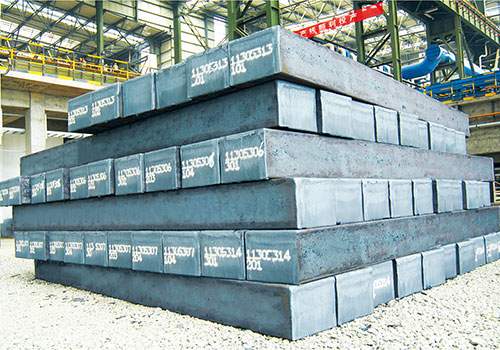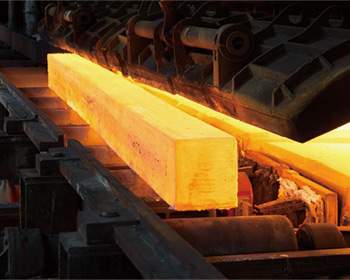
Applications of Steel Billets Across Industries
Introduction

Steel billets, the semi-finished products of the steelmaking process, serve as the foundational building blocks for a myriad of industrial applications. These versatile materials undergo further processing to become a wide range of products, from structural steel to automotive components. In this comprehensive guide, we will explore the diverse applications of steel billets across various industries, delving into the unique properties and advantages that make them indispensable in modern manufacturing.
Understanding Steel Billets
Before diving into their applications, let’s briefly understand what steel billets are. Steel billets are solid, rectangular steel sections with a uniform cross-section. They are produced by continuous casting or ingot rolling and are used as the starting material for further processing into various finished products. The properties of a steel billet can be tailored by adjusting the chemical composition and manufacturing process to meet specific requirements.
Key Properties of Steel Billets
- Strength: Steel billets possess high tensile strength, making them ideal for applications requiring load-bearing capacity.
- Durability: They are resistant to wear and tear, ensuring long service life.
- Versatility: Steel billets can be easily shaped and formed into a wide range of products.
- Weldability: They can be joined together using various welding techniques.
- Machinability: Steel billets can be machined to precise dimensions and tolerances.
Applications of Steel Billets
Construction Industry
Steel billets are extensively used in the construction industry to produce:
- Rebar: Reinforcing bars for concrete structures
- Structural steel: Beams, columns, and other structural components
- Wire rods: Used in the production of wire products like nails and fencing
Automotive Industry
The automotive industry relies heavily on steel billets for manufacturing:
- Engine components: Crankshafts, connecting rods, and camshafts
- Chassis components: Frame rails and suspension parts
- Body panels: Stamped steel panels for car bodies
Manufacturing Industry
Steel billets find applications in various manufacturing sectors, including:
- Machinery: Production of machine parts and tools
- Appliances: Manufacturing of household appliances
- Railways: Production of rails and railway components
Comparison of Steel Billet Applications
| Industry | Common Applications | Key Properties Required |
|---|---|---|
| Construction | Rebar, structural steel, wire rods | High strength, durability, weldability |
| Automotive | Engine components, chassis, body panels | High strength, toughness, formability |
| Manufacturing | Machinery, appliances, railways | Versatility, machinability, specific alloying elements |
Factors Affecting Steel Billet Selection

The choice of a steel billet is a critical decision that can significantly impact the quality and performance of the final product. Several factors come into play when selecting the appropriate steel billet for a specific application.
- Chemical Composition: The chemical composition of a steel billet determines its mechanical properties such as strength, ductility, and toughness. The presence of alloying elements like carbon, manganese, and chromium can significantly influence the billet’s performance.
- Grade: Different steel grades have varying properties. For instance, low-carbon steel is often used for general construction purposes, while high-carbon steel is suitable for applications requiring high hardness and wear resistance.
- Size and Shape: The size and shape of the billet must be compatible with the manufacturing process and the desired dimensions of the final product.
- Surface Quality: Surface defects such as cracks, inclusions, and decarburization can adversely affect the quality of the final product.
- Mechanical Properties: Tensile strength, yield strength, and elongation are essential mechanical properties that must be considered when selecting a steel billet.
- Cost: The cost of the steel billet is a significant factor, especially for large-scale projects.
- Availability: The availability of the required steel billet in the desired quantity and quality can also influence the selection process.
Conclusion
Steel billets form the backbone of numerous industries, providing the raw material for a wide range of products. Their versatility, strength, and durability make them indispensable in modern manufacturing. By understanding the key properties and applications of steel billets, engineers and manufacturers can select the most suitable material for their specific needs.
FAQ
What is a steel billet?
A steel billet is a semi-finished product of the steelmaking process. It is a solid, rectangular steel section with a uniform cross-section. Billets are used as the starting material for further processing into various finished products, such as bars, rods, and shapes.
What are the main applications of steel billets?
Steel billets are used in a wide range of industries, including construction (for rebar, structural steel, and wire rods), automotive (for engine components, chassis, and body panels), and manufacturing (for machinery, appliances, and railways).
What factors affect the quality of a steel billet?
The quality of a steel billet is influenced by various factors, including:
- Chemical composition: The specific alloying elements and impurities present in the steel.
- Manufacturing process: The casting and rolling processes used to produce the billet.
- Cooling rate: The rate at which the billet is cooled after casting.
- Surface condition: The presence of defects such as cracks, inclusions, or surface roughness.
How are steel billets classified?
Steel billets can be classified based on several criteria, including:
- Chemical composition: Carbon steel, alloy steel, stainless steel.
- Shape: Square, rectangular, or round.
- Size: Billets are available in a wide range of sizes, depending on the intended application.
What are the future trends in steel billet production?
The steel billet industry is expected to see several trends in the coming years, including:
- Increased use of high-strength steels: To meet the demand for lighter and stronger materials in industries like automotive and aerospace.
- Focus on sustainability: Adoption of more environmentally friendly production processes and the use of recycled steel.
- Advancements in manufacturing technologies: Utilization of advanced technologies such as automation and artificial intelligence to improve efficiency and product quality.






